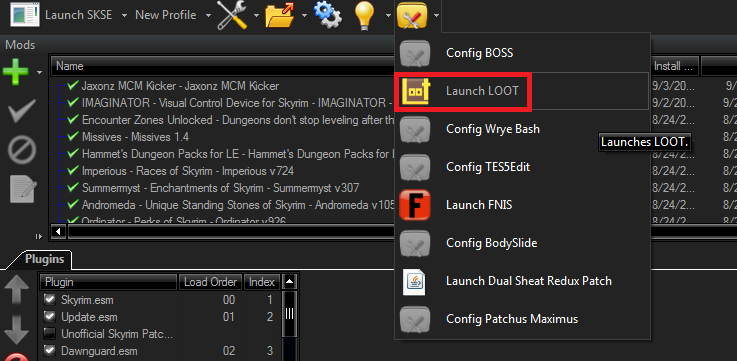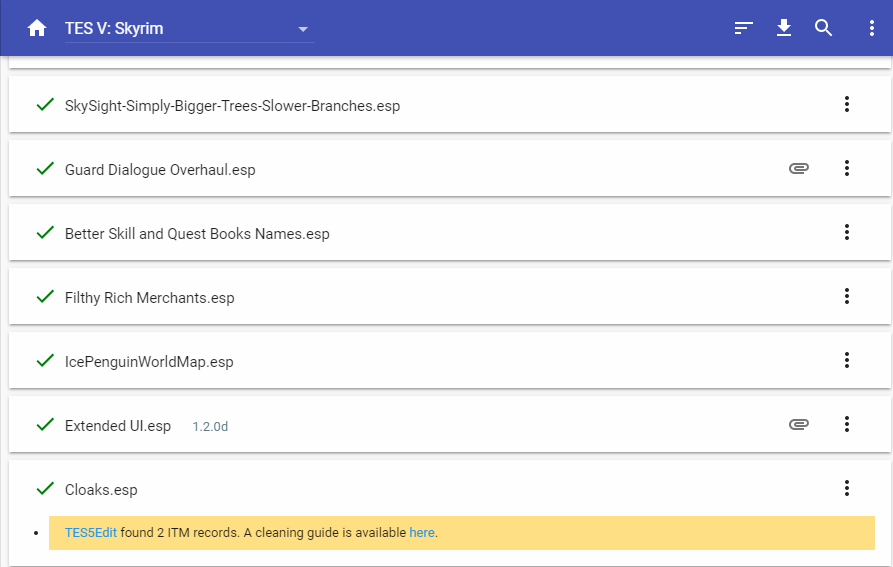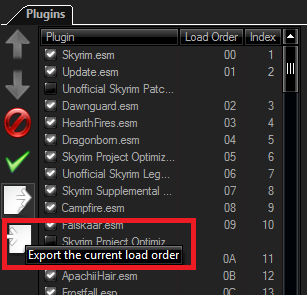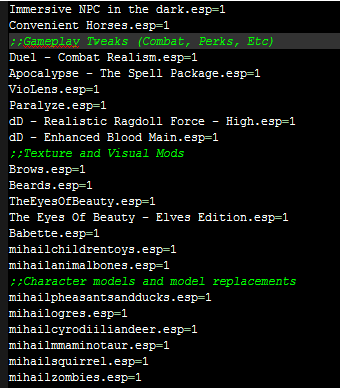How to Sort Your Skyrim Mod Order and Stability Test for Crashes
The Best Method for Skyrim Mod Organizing and Crash Testing
There’s quite a handful of Skyrim load order guides around the ‘net, but you need to cherry-pick through them as many can be outdated, or not comprehensive enough. That’s why this guide will aim to be the most comprehensive Skyrim load order guide, with plenty of examples, screenshots, and recommended tools.
Having a correct load order ensures that your Skyrim gaming experience is (almost) entirely crash-free – the only reason your Skyrim should crash is due to maybe RAM issues, or a bad mod. Having a correct Skyrim mod load order reduces conflicts and crashes by a significant amount, and if your Skyrim continues to crash, you can begin to isolate the problem to a troublesome mod.
Recommended Tools:
Check the List of Dangerous Skyrim Mods
Before you begin, you should consult the list of dangerous and outdated Skyrim mods – this is a comprehensive list of mods that are known to introduce crashes or other problems to Skyrim. If you have any of the mods on this list, you should uninstall them and use an alternative (the list makes recommendations).
Initial Mod Order Sorting (NMM + Loot)
Next, launch NMM and point it to your LOOT installation path – or if you already have LOOT installed, go ahead and launch LOOT through NMM.
Note: Make sure that you properly set up the Nexus Mod Manager to work with Skyrim.

From within LOOT, click the “Sort Plugins” button in the top right corner – this should automatically sort your mod list based on what LOOT thinks is the best practical load order, but it’s not a good idea to follow LOOT’s load order exactly. We will just use it as a sort of guideline.

After LOOT orders your mod list, scroll through the list of your mods and check to see if LOOT reports any mod conflicts or errors – in some cases it may recommend cleaning mods with TES5EDIT, but this is not recommended. The only reason you should ever clean anything with TES5EDIT is
- You don’t want to start a new game, but want to remove all traces of a mod’s scripts from a saved game.
- Cleaning a mod with TES5EDIT was recommended by the mod author.
Aside from those two situations, it is much better to just start a brand new game after installing or uninstalling a lot of mods.
In any case, once LOOT has sorted your mod list, go ahead and close LOOT.

Now in Nexus Mod Manager, click the button “Export the current load order” – this will save your mod load order as a .txt file somewhere on your computer.
Fine-Tuning Your Skyrim Mod Order in Notepad++
Now open the loadorder.txt file with a text editor – we highly recommend Notepad++, as it will make this next job easier, rather than regular Notepad.
Now at the top of the loadorder.txt file, paste this before all of the mods:
;;Patches and Bug Fixes ;;Huge Mods and Overhauls ;;Quest Mods ;;Environment and Weather Overhauls (Not Plants or Foliage) ;;New Cities, Towns, and Lands ;;New Buildings in Existing Game Areas ;;Plant and Grass Mods ;;Gameplay Tweaks (Combat, Perks, Etc) ;;NPC Tweaks and Add-Ons ;;Texture and Visual Mods ;;Sound and FX Mods ;;Menu and Inventory Tweaks ;;Cheat Items ;;Character models and model replacements ;;Weapon, Armor, and Clothing Add-Ons ;;Crafting Mods ;;Misc. Mods ;;Weapon, Armor, and Clothing Tweaks (Texture replacements, etc) ;;Mods specified to be loaded last ;;Mods that remove graphical effects (Godrays disablers, etc)
To quickly explain – the reason all of those lines begin with // is because they are commented out, those lines will be skipped over and not interpreted as part of the mod load order. We are going to organize your mods into sections, following all of those lines.
So now here is where you need to do your diligent research – this is going to be very time consuming if you have a lot of mods, but the reward will be a significantly smoother gameplay experience, with far less crashes.
Go to Nexus Mod Manager and open each mod’s webpage one by one, and read the mod instructions for the recommended load order to see if the mod is recommended as being loaded last, or at the beginning, etc.
Now begin copypasting your mod lines in the loadorder.txt to their corresponding section in the section list we created above.
When you’re finished, your loadorder.txt file should look like this:

Now go ahead and save it, and in Nexus Mod Manager, click the “Import load order” button, and choose the loadorder.txt file you just saved.
Testing Your Skyrim Mod Load Order for Crashes
Some people recommend starting a new game and playing for a while to test crashes and specific areas where Skyrim can crash. This is a good idea, but extremely time-consuming if you actually run around and play the game “normally”, waiting for crashes to happen.
There is a much faster and easier method of quickly testing Skyrim stability with a lot of mods.
First, launch Skyrim, but do not load a game or start a new one. Simply open the developer console by pressing tilde ~ on your keyboard.
In the developer console, type:
coc Riverwood
Riverwood is a well-known crash area for a few different reasons, so if your game loads to Riverwood fine, we’re good so far.
Next, open the developer console again and type these commands:
player.forceav stamina 9999 player.forceav speedmult 1200 tcl tgm
This is going to allow you to fly around Skyrim at super speeds, and clip through objects.
What we basically want to do is fly around the game while staying near the ground, so all textures and objects are loaded into your memory as fast as possible. This is going to “stress test” Skyrim’s stability and the engine’s ability to load things without crashing, at super speeds. Think of it like “benchmarking” your mod load order list.
Sooner or later, Skyrim probably will crash – it used to crash a lot more frequently when running out of texture memory, but that doesn’t really happen in 2018 with texture memory patches and all the updates to Skyrim over the years. But your game will crash after a while of flying around at Superman speeds and loading the whole game world as quickly as you can fly through it.
The trick here is to figure out
- What game area you crashed in
- How long you were flying around before you crashed
If you were flying around for a long time before you crashed, it was probably the engine running out of texture memory or similar. However, if you crashed immediately upon entering a certain area, that area could be the culprit. You’ll need to experiment with this, and do several stability tests to determine if specific areas are causing crashes.
Once you figure out which specific area is causing crashes, go back to your mod list and check them carefully, especially their descriptions on their mod pages. Are any of your mods adding spawn points (such as NPC patrols) or other scripts to that area? If so, disable those mods and add them back one by one, until you find the culprit.




